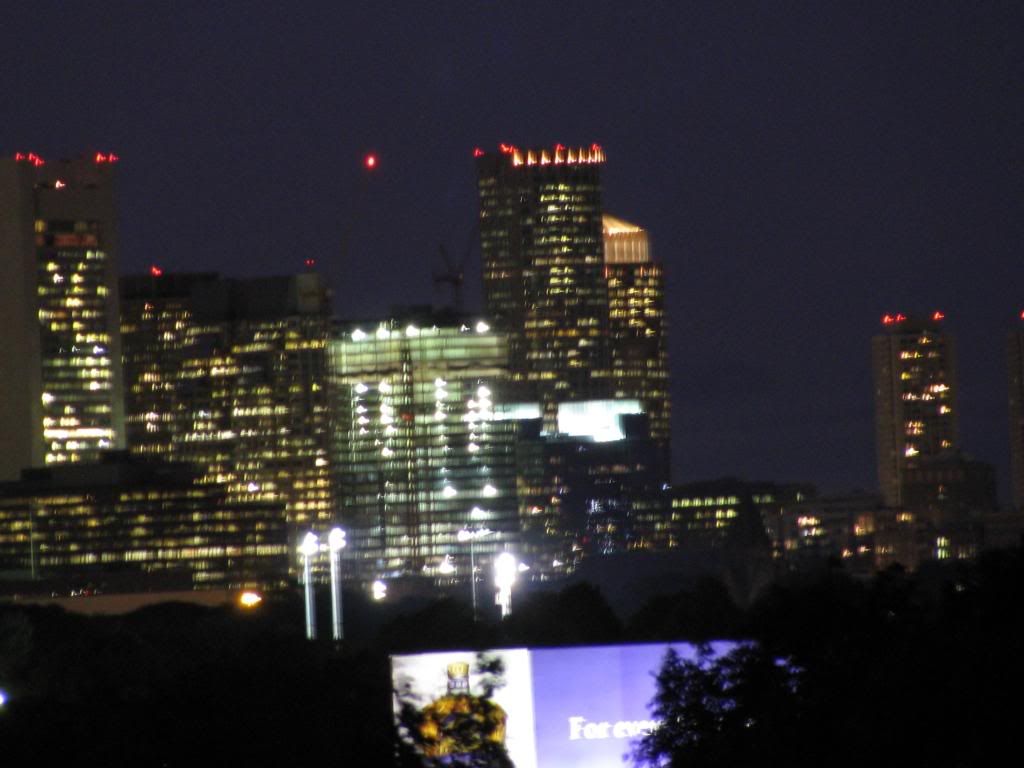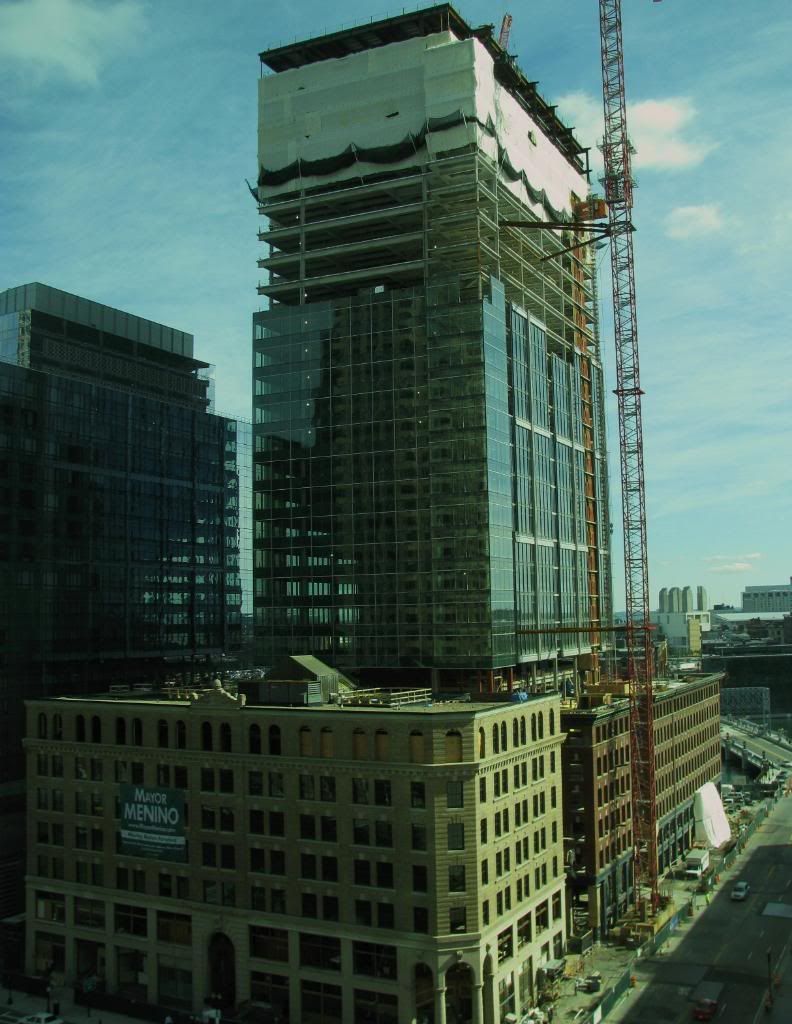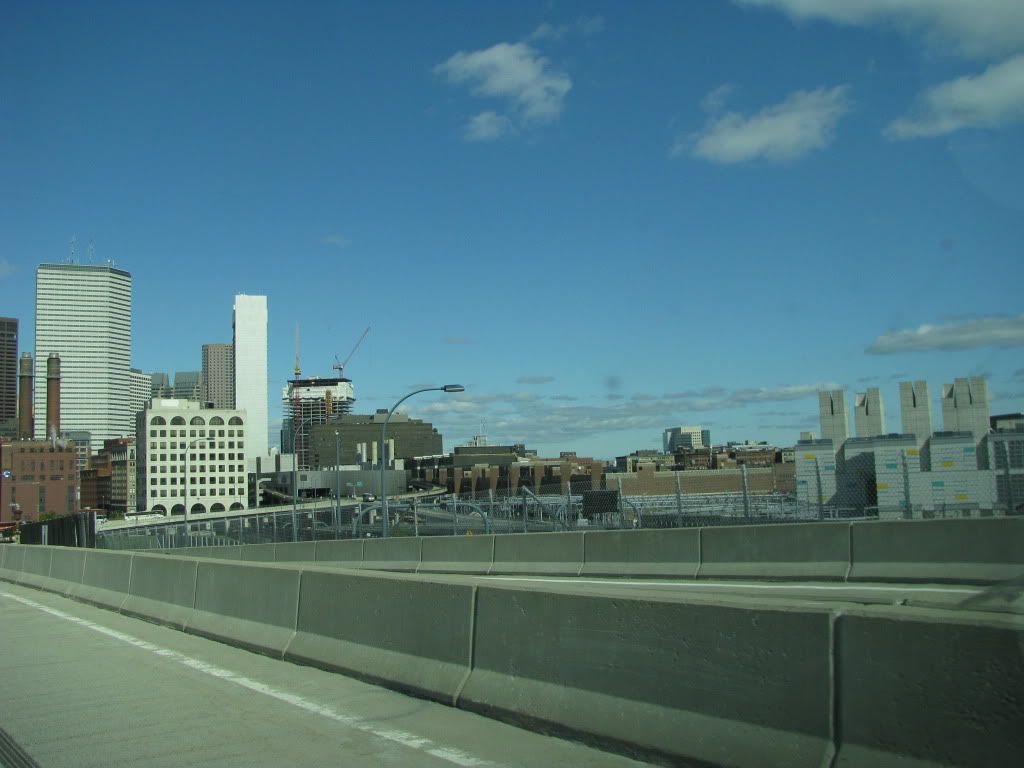Re: Atlantic Wharf (formerly Russia Wharf)
I'm guessing that the system accounts for both the possibility of gathering more than 40,000 gallons and the possibility of running the AC system during a drought, via respectively, some sort of run off system and a tap water input connection, neither of which is shown in the diagram.
Correct. Only under ideal situations (ideal for the system not those of us who like sunny days) would the system account for the entire cooling load for a building. The system main holding tanks will fill up with water, which will get drown off to a smaller tank with a booster pump station. Between the 2 tanks the water will be filtered (possibly chlorinated). The booster pumps will draw from the smaller storage tank full of the treated water, and pump it up to the cooling towers.
For a building this size I am going to estimate a make up demand of approx. 75-100 gpm to the cooling towers. That's 6,000 gallons and hour, which would mean a full 40,000 gallon tank would provide for 6.66 hrs of continuous cooling. That is still a good chuck of time when operating a peak, but not enough to offset a need for city water.
All rainwater harvest systems are designed to basically supplement a standard system. There will still be water supplies to the cooling system designed for the full load. The hope is that it is just not used as much, thus saving water.
What really should happen beyond that is re-use of the cooling tower blow down which is still relatively clean water, which could be easily re-filtered and sent right back up.
Now while there is great savings in water as a natural resource, the operating costs probably outweigh a financial savings. Water is cheaper than KWH. The cost to run the boosters and the filtering system plus controls would definitely exceed the water savings.
The city would be much better off (and hopefully will at some point) following the lead of other cities which have much greater needs for recycling water. Singapore for instance has an entire "new water" system run throughout the city that is used for all kinds of non-potable water needs such as cooling towers, toilet flushing, even decorative fountains. They had to do this because Malaysia controls the domestic water and could shut it off at any time if Singapore got out of line. They needed to become self sufficient. The "new water" is technically cleaner than the domestic water coming from Malaysia, but cannot be used as potable water at this time basically because it is recycled from everything gray water & black water.
It would be great if the city began instituting infrastructure improvements to make an eventual switchover to this type of system. All the rainwater could be collected and treated at a central location (Deer Island II) and pumped back as a separate water system into the city, while still allowing appropriate amounts to leech back into the water table. This water would then be used for non-potable requirements. This is a pipe dream, but one that will eventually happen, but should happen much sooner than it will.
In the mean time point of use rainwater harvest systems are a great thing, and as can be seen, can be used as great marketing tools.








